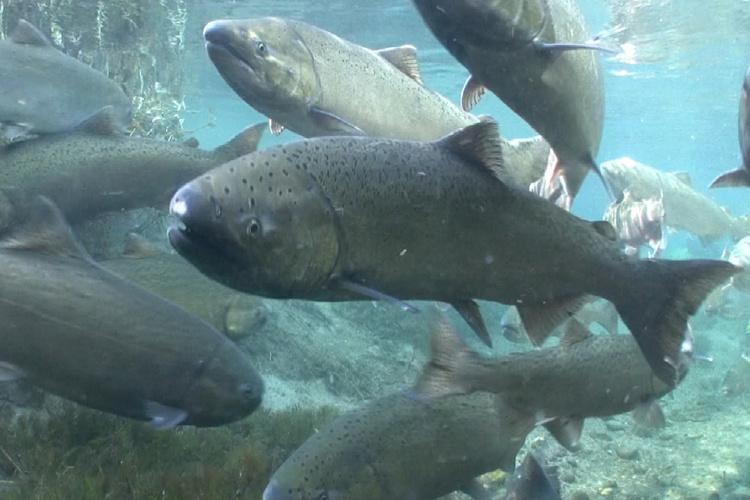Moderate-
High
Climate vulnerability
Sensitivity to climate change
Moderate-
High
In general, Chinook salmon appear sensitive to warmer water temperatures, low flows, and high flows. Warmer water temperatures can affect physiological performance and energy budgets, as well as developmental rates and the timing of key life-cycle transitions (i.e., phenology). Lower stream flows have been linked to mass mortality events of Chinook salmon. Extreme high flows can reduce the likelihood of egg survival during incubation, and both low and high flows can affect adult migration. Temperature: Chinook salmon appear sensitive to elevated freshwater temperatures both as juveniles rearing in tributary streams and as adults migrating up river networks to spawn. Water temperatures positively affect metabolic costs, so warming reduces the amount of time a spawning adult can persist in freshwater and decreases the total distance a fish can migrate on a given level of energy stores. Indeed, Chinook salmon that migrate slower, and accrue more energy loss, have higher mortality rates in the Columbia River. In addition to energetic effects, temperatures in excess of ~17˚C (the approximate pejus temperature for Chinook salmon) begin to thermally stress individuals, making them more vulnerable to pathogens and other health issues. Episodes of high water temperature have led to large mortality events in several river systems within or adjacent to the Columbia River Basin. Puget Sound Chinook salmon may be more sensitive to warmer summer temperatures and lower flows, as their spawning migration encounters the warmest part of the watershed (the downstream portion) during the warmer part of the year (later summer and early fall). Cool tributaries may provide refuge from heat stress for migratory Chinook salmon, and may reduce the sensitivity of this species to warming temperatures. Warming temperatures in the streams where Chinook salmon rear can have negative effects even when temperatures are not near the thermal maxima of the species. For example, the strength of density dependence in fish growth was positively related to water temperature, which corroborates the mechanistic predictions of bioenergetics models. This suggests warming temperatures decrease the carrying capacity of streams for rearing juvenile salmonids. Because Puget Sound Chinook salmon rear in streams for up to one year, they may be vulnerable to heat stress during low flow periods of late summer and fall. However, the life-history diversity of this species (particularly the diversity in age-at-maturity) likely enhances resilience to mortality events such as extreme flows or temperatures. Flow regimes: Low flows during the summer and fall may be stressful for migrating adults. Mass mortality events in both fall and spring-run Chinook salmon have been linked to high temperatures due to low flows. Some salmon populations may also depend on high flows to allow passage to upstream spawning areas. For example, spring-run (stream-type) Chinook often migrate to spawning grounds during the high flows that occur from late-wintermid-spring through early-summer. However, high flow events during the fall and winter can scour the gravels where embryos incubate, reducing egg-to-fry survival. Increased severity of winter floods has been linked to decreased egg-to-fry survival in Washington. Snowmelt and the resulting runoff in spring may be important for aiding the seaward migration of salmon smolts. Reduced flows during the spring have both direct and indirect effects on smolt migrations. Marine: Increases in ocean and estuarine temperature, increased stratification of the water column, and/or changes in the intensity and timing of coastal upwelling may alter primary and secondary productivity, with potential impacts on growth, productivity, survival, and migrations of salmonids. For example, cool Pacific-Decadal Oscillation (PDO) years have historically coincided with high returns of Chinook salmon, while warm PDO cycles coincided with declines in salmon numbers. In general, changes in coastal ocean habitat quality and productivity could negatively impact Chinook salmon.
Exposure to climate change
Moderate-
High
- Increased freshwater temperatures
- Lower summer flows
- Increased winter/spring flood events
